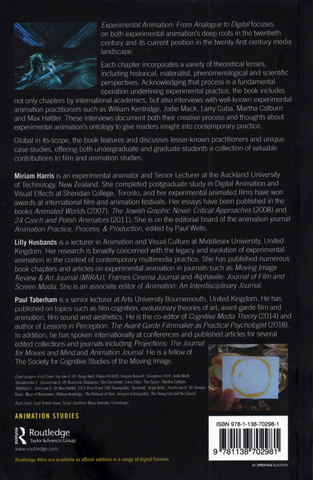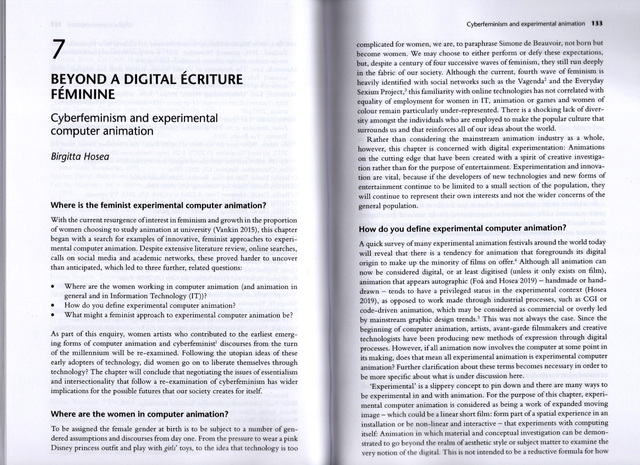In the 1990s, Sadie Plant declared in Zeros and Ones (1998) that the future would be female since women were ideally suited to working with information technology. However, the numbers of women working in digital technology today remain disproportionately low compared to the population overall. Whatever happened to cyberfeminism?
From the pioneers of the 1970s, the cyberfeminists of the 1990s and today’s intersectional post-cyberfeminists, radical artists have argued for the use of digital technology to critique, subvert, innovate and deliver social change. This chapter aims to re-evaulate the experimental practice of cyberfeminist artists and its relevance for contemporary practitioners. What does it mean for women to experiment in computer animation? Can digital techniques be used as a new form of language to represent the voices of those who are not normally heard in the mainstream?
The chapter draws upon first-hand interviews, archival and historical literature review. Lillian F. Schwartz, Rebecca Allen and Vibeke Sorenson are presented as artist pioneers of computer animation in the 1970s and 1980s who advanced feminist ideas in male-dominated environments. Cyberfeminist discourses of the 1990s from Sadie Plant, VNX Matrix, Linda Dement and others then blended radical, post-structuralist French feminism with utopian ideas about the revolutionary potential of ‘new media’ for the creation of new, virtual worlds and the transformation of gender relationships. These ideas were subsequently accused of techno-naivity, essentialism and exclusivity. In the 21st century, post-cyberfeminist discourses are now re-emerging through xenofeminism, Afrofuturism and glitch feminism. The chapter concludes that inequality can be seen as hard wired into the very code of the technologies we take for granted due to the language used and assumptions programmed into them by the people who created them, and therefore, it is vitally important to ensure that a diverse range of people are inspired to work with technology.



